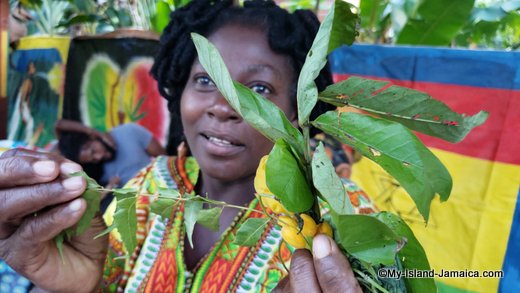Subscribe for all my updates and don't miss a thing! Sign me up!
What Is A Rasta Woman?
What Is Her Role In Rastafari?
Sharing Is Caring! Share this awesome content with your friends now.
by Venesha Johnson | Associate Writer
Rastafarianism is a huge part of Jamaican culture. Most times, when we speak of the Rastafari, the men are at the forefront of its religion, lifestyle and culture. But what is the role of a Rastawoman in Rastafari?
New! Take a piece of Jamaica with you💃!
Savour the memories! Now you can get your authentic Jamaican souvenir items, as well as traditional Jamaican herbs, spices and housewares on our popular e-store. Click Here to learn more.
And, if you ever need a trustworthy and knowledgeable local guide, consider booking a private tour with us!
History of the early Rastafarian Women
There was a clear division of labour, with males doing public work and women caring for the home. Decision-making was frequently excluded for women. A wife had to follow her husband's instructions, wear what he advises, and cover her hair. Rastafarian men were thought to be the means through which women found salvation.
Women rarely attended festivities and did not participate in public discussions for a large portion of the Rastafari movement. They were not considered an elder in the household either. The Rastafari had a clear idea that women should be subordinate.
But since the 1970s, the status of women has been shifting. Instead of being brought in by men, women are joining the movement on their own. They attend festivities, take part in chanting and dancing, and many no longer wear dreadlock covers.
Some men in Jamaica engaged in covert polygamy, where the spouses were unaware of each other, and claimed that this was a traditional African custom. Women opposed the practice, therefore it was not widely adopted.
Watch Video! Rastafari Indigenous Village

Interesting facts about the Rasta Woman
Women were initially involved in the early groups, much as they were in related Revival movements at the time. Then, in the 1960s, women practically vanished outside of being spouses. Only a Rastaman could "grow" a woman into a Rastafarian.
In the group, women are expected to support their King and have a very minor role. Then, starting in the 1970s, women started to assert themselves as Rastawomen.
In most cases, their weddings are informal and remain common law in the legal sense. Although things are changing, a woman's primary responsibilities in the Rastafarian movement are still caring for the home, her Kingman and her children.
Because you are closer to God when you are in your natural state, Rasta males feel that being naked is beneficial. Rastas, meanwhile, think that women shouldn't flaunt their bodies.
Unlike women in "Babylonial society” or Western culture, Rastafarian women are Queens and are expected refrain from certain fashion norms. They cannot wear short skirts, or makeup, or use chemicals on their hair, among other requirements.
Many Rastafarian women are unable to use birth control of any kind because they believe it to be unnatural and an attempt by Europeans to control the African population. While understanding her station, Rastafarian women are supposed to support the community.
Due to their extreme adherence to the rigid scriptural tenets of the Old Testament, the Bobo Shanti order is the tightest regarding women's role. For Rastafarian women, abortion is likewise not an option because, like in many other world faiths, it is viewed as murder.
Since a Rasta woman is not considered in the decision-making process, a respectable woman in Rastafari is considered one who respects the men and complies with their requests. This runs directly against many of their other ideas about equality.
Rasta men frequently have multiple lovers, however, it is improper for Rasta women to do the same.
Some Rastafari women adhere to menstruation taboos, primarily refraining from cooking or going to Nyabinghi while they are menstruating. The duration of the prohibition varies among the mansions; it is 7 days for the Nyabinghi Order and 21 days for Bobo Shanti, but it is not present in certain of them.
The truth is not much has changed in the Rastafarian society for women, most still dress modestly and live within the confines of their religious rules.
However, like men, you will find many women in society wearing locs not for religious purposes but simply as a fashion statement.
Rastafarian women are commonly referred to as Queens and Empresses.
Sharing IS Caring! Please help me get the message out by sharing this article with your friends on social media (links below). Thnx ;-)
If you found this page useful, please consider subscribing to my weekly newsletter, to get even more.
It tells you each week about the new information that I have added, including new developments and great stories from lovers of Jamaica!
Return to Who Is Jah In Jamaican Culture from What Is A Rasta Woman?
Return to My Island Jamaica Homepage from What Is A Rasta Woman?
References & Sources For What Is A Rasta Woman?
- Family and community - re: online (no date) RE. Available at: https://www.reonline.org.uk/knowledge/rastafari/family-and-community/ (Accessed: November 29, 2022).
- Rastafari culture (2020) Black History Month 2022. Available at: https://www.blackhistorymonth.org.uk/article/section/real-stories/rastafari-culture/ (Accessed: November 29, 2022).
- Writer, S. (2015) Learn about the roles of race and women in Rastafari., Jamaicans.com. Available at: https://jamaicans.com/race_women/#:~:text=A%20Rastafarian%20woman%20is%20a,use%20chemicals%20in%20their%20hair (Accessed: November 29, 2022).
What Is A Rasta Woman? | Written: November 29, 2022
New! Get My Latest Book👇🏿
|
You asked, I've answered! You no longer need to save for months or years, to enjoy paradise! I spilled the beans! sharing my top tips on finding cozy accommodations and secret gems, only the way a native could! Click Here to pick it up on my e-store and start saving now! |
See The Best Of Jamaica - In Videos!
|
My channel reaches over 140,000 subscribers worldwide and has leveraged over 11 million views, sharing, what I call 'The Real Jamaica'. Subscribe today and join our family of viewers. |
Read More ...
New! Experience The REAL Jamaica!
Book Your Private Tour here and experience Jamaica the way we (locals) do!
P.S. Didn't find what you were looking for?
Still need help?
Click Here to try our dependable and effective Site Search tool. It works!
Or, simply click here and here, to browse my library of over 500 questions and answers! Chances are someone already asked (and got an answer to) your question.









New! Comments
Have your say about what you just read! Leave me a comment in the box below.